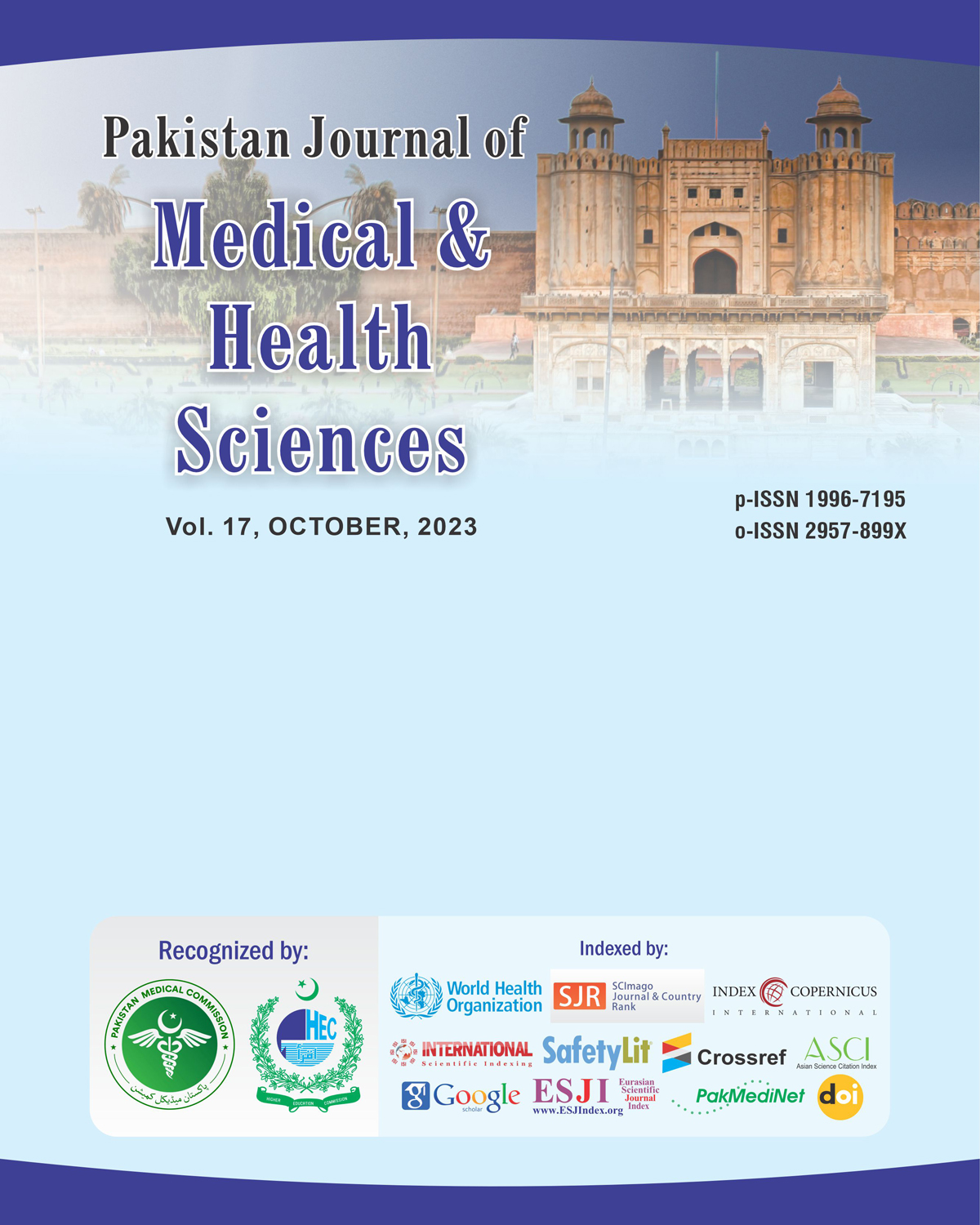Prevalence of Extended-Spectrum Beta-Lactamase Genes among Escherichia Coli and Klebsiella Pneumniae Clinical Isolates
DOI:
https://doi.org/10.53350/pjmhs20231710146Abstract
Background: Extended-spectrum beta-lactamase (ESBL) producing Escherichia coli and Klebsiella pneumoniae have become increasingly common in healthcare settings, posing a major threat to effective antibiotic therapy. These organisms can resist multiple classes of antibiotics, leading to limited treatment options and increased healthcare burdens. This study aimed to determine the prevalence of ESBL genes ‘CTX-M, TEM, and SHV among clinical isolates of E. coli and K. pneumoniae’ collected from a tertiary care hospital in Peshawar, Pakistan.
Methods: A cross-sectional study was conducted from January to June 2023 in the Department of Microbiology, Hayatabad Medical Complex, Peshawar. A total of 110 non-duplicate clinical isolates of E. coli and K. pneumoniae were processed. ‘Phenotypic screening for ESBL production was done using the combination disk method’. Polymerase chain reaction (PCR) was performed to detect CTX-M, TEM, and SHV genes in phenotypically positive isolates. ‘Statistical analysis was conducted using SPSS version 25, and associations were assessed using the chi-square test’.
Results: From a total of 110 isolates, 60% were found to be ESBL positive. The most prevalent was CTX-M (69.1%), followed by TEM (47.3%) and SHV (38.2%). Many of the isolates did contain several genes. The presence of prior antibiotic therapies, indwelling catheters, and being in an ICU was significantly correlated with having an ESBL gene (p < 0.05).
Conclusion: The high prevalence of ESBL genes, particularly CTX-M, highlights the urgent need for molecular surveillance and stricter antibiotic stewardship in clinical practice.
Keywords: ESBL, E. coli, K. pneumoniae, CTX-M, TEM, SHV, antibiotic resistance, PCR, Pakistan
Background: Extended-spectrum beta-lactamase (ESBL) producing Escherichia coli and Klebsiella pneumoniae have become increasingly common in healthcare settings, posing a major threat to effective antibiotic therapy. These organisms can resist multiple classes of antibiotics, leading to limited treatment options and increased healthcare burdens. This study aimed to determine the prevalence of ESBL genes ‘CTX-M, TEM, and SHV among clinical isolates of E. coli and K. pneumoniae’ collected from a tertiary care hospital in Peshawar, Pakistan.
Methods: A cross-sectional study was conducted from January to June 2023 in the Department of Microbiology, Hayatabad Medical Complex, Peshawar. A total of 110 non-duplicate clinical isolates of E. coli and K. pneumoniae were processed. ‘Phenotypic screening for ESBL production was done using the combination disk method’. Polymerase chain reaction (PCR) was performed to detect CTX-M, TEM, and SHV genes in phenotypically positive isolates. ‘Statistical analysis was conducted using SPSS version 25, and associations were assessed using the chi-square test’.
Results: From a total of 110 isolates, 60% were found to be ESBL positive. The most prevalent was CTX-M (69.1%), followed by TEM (47.3%) and SHV (38.2%). Many of the isolates did contain several genes. The presence of prior antibiotic therapies, indwelling catheters, and being in an ICU was significantly correlated with having an ESBL gene (p < 0.05).
Conclusion: The high prevalence of ESBL genes, particularly CTX-M, highlights the urgent need for molecular surveillance and stricter antibiotic stewardship in clinical practice.
Keywords: ESBL, E. coli, K. pneumoniae, CTX-M, TEM, SHV, antibiotic resistance, PCR, Pakistan
Downloads
How to Cite
Issue
Section
License
Copyright (c) 2023 Ghazala Zarin Afridi, Rahila Bano, Muhammad Ilyas, Abdul Qadeer, Wajeeha Zarin Afridi, Sharqa Begum

This work is licensed under a Creative Commons Attribution 4.0 International License.


